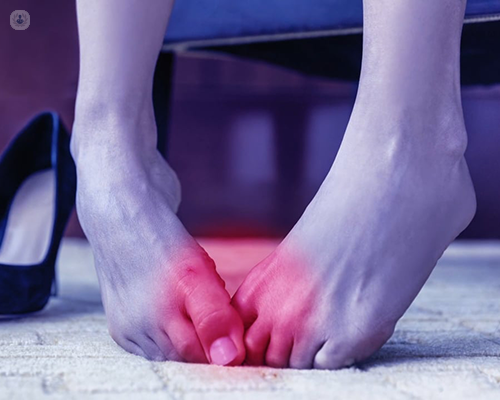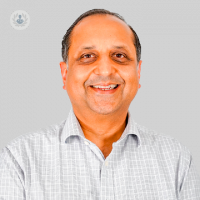Bunions - am I at risk?
Written by:A bunion, also termed as a hallux valgus, is an uncomfortable and painful bone deformity on the foot. When the big toe pushes against the second toe, the joint of the big toe is made bigger and a hard, bony bump sticks out. Depending on the severity of the bunion, the quality of life of an individual can be greatly affected. Bunionettes, or small bunions, may also form on the little toe for the same reasons.

What causes bunions?
Although doctors are unsure why, bunions are more common in women. They also have the tendency to run in families, and may occur regardless of the type of footwear worn, although this can be an important factor in some cases. Wearing high-heels or badly-fitting shoes, for example, can increase an individual´s chances of developing bunions. Other possible causes are foot injuries or certain medical conditions such as arthritis.
Bunion symptoms
In most cases, if a bunion develops on an individual's foot it will be very hard to ignore. Some of the symptoms for bunions are:
- A bony lump at the base of the big toe
- Swelling around the joint of the big toe
- Constant or periodic pain
- Difficulty moving the big toe (often as a result of arthritis)
Non-surgical treatment for bunions
In many cases, bunions don't need medical treatment. However, if any of the above symptoms persist, it is advisable to seek a specialist's opinion. The first stages of medical treatment aim to provide pain relief for bunions, and the prevention of any further worsening of the condition. A specialist may recommend appropriate shoes that fit the form of the foot better, with a wider instep and more space for the toes in order to alleviate any unnecessary pressure on the bunion. Toe spacers may also be utilised to ease symptoms, but these are not always the most practical option.
It is also recommended that the patient undergo an exercise regime in order to strengthen short intrinsic foot muscles and arch supporting muscles, as well as maintain the equilibrium of the Achilles tendon.
Bunion surgery
In severe cases of bunions, surgery may be required. Bunion surgery aims to re-align the bone, ligaments and tendons, whilst conserving the nerves, thus restoring the joint to its correct form. In order to do this, the bone must be cut, and pins and screws are used to hold the joint in place. There are a number of possible techniques that can be used, including minimally invasive surgical techniques that produce positive results when performed by experienced orthopaedic surgeons.
Recovery time after surgery may vary, but it typically takes around 6 weeks for the bones and tissue to mend properly. Full recovery can take about 3 to 4 months before swelling and stiffness disappears completely. A return to playing sport is generally not advised until after 6 months have passed.
Risk factors may include:
- Infection
- Nerve damage
- Stiffness
- The possibility of developing osteoarthritis or degenerative joint disease
It is very unusual for the bone not to heal properly. If any complications do arise after surgery, they are usually easily-treatable.


